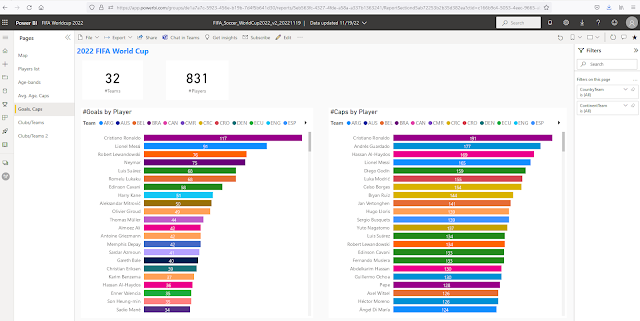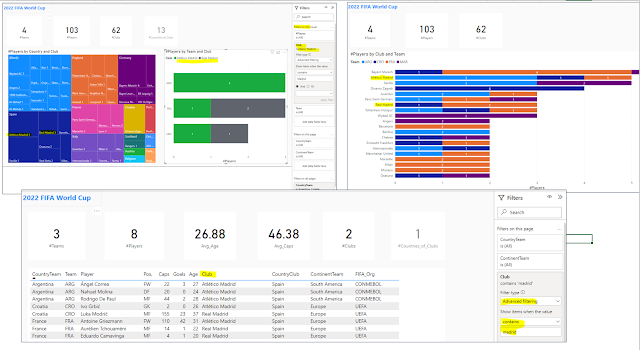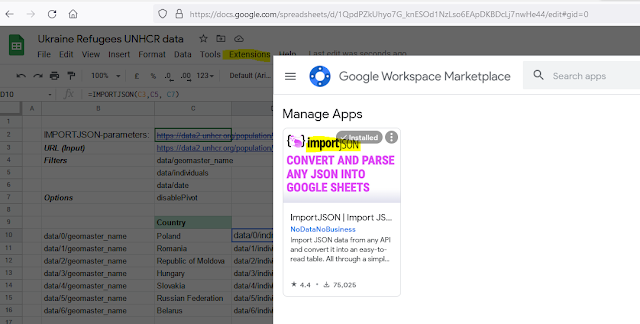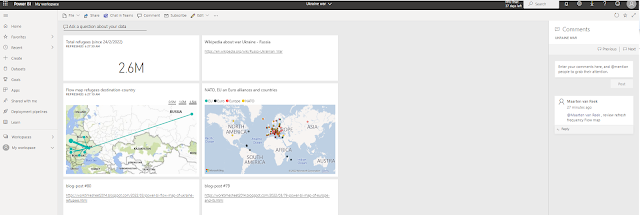#84: FIFA Soccer World Cup 2022 Power BI report
For the FIFA World Cup 2022 in Qatar, I made a Power BI dashboard based on this data source:
https://en.wikipedia.org/wiki/2022_FIFA_World_Cup_squads
I shared this dashboard here:
and on the Power BI Community:
Here an example of some charts in this dashboard:
So of course the #Goals-list is led by Cristiano Ronaldo (37 years) and Leo Messi (35), and if they will make some more goals in this World Cup, their goal# will be automatically updated in my report (thanks to Wikipedia that keeps his data up-to-date).
NB: for a full breakdown of all Messi's goals (both for Argentina as for the clubs he played/plays for), see this older blog-post:
https://worktimesheet2014.blogspot.com/2021/01/messi-goal-tracker-dashboard-in-google.html
So as you can see, before the start of the World Cup, Messi has made 91 goals for Argentina:
I'll now show all pages of the Power BI dashboard and share some 'insights' I got from the charts:
*Page 1
So most teams come from Europe (UEFA), while a lot of good players that play for a club in Europe come from South America. But as this is the last World Cup with 32 countries, and in 2026 there will be 48 countries, this should be solved then.
*Page 2
So this table is filtered for team = ARG.
Fields:
-Pos.: position (GK = Goalkeeper, DF = Defense, MW = Midfield, FW = Forward)
-Country-Club: the country of the club a player plays for, e.g. for Messi, that plays for PSG, this is France. This info was not in the Wikipedia page that was the main source for my report, but I got it from here: http://www.eurotopteam.com/football/EN/club.php
So this is just for European clubs, but as the best players of all countries (continents) play normally in Europe, this is enough for the things I wanted to analyze.
-Continent-Team:Continent in which a country/national team plays its international competition, e.g. for Messi this is South America.
This table allows for all kinds of filtering, e.g. 'players with >= 100 caps' :
*Page 3
In this 'small-multiples' chart, you can see that for each country the # players for 3 age-bands:
- < 26 years
- 26-30-years (this should be the age-range when a player is at his best level, see here)
- > 30 years
I filtered on what are probably the strongest countries (to compare them more easily), and it looks like Germany has the best 'score' on this age-dimension.
*Page 4
So this shows e.g. that Belgium has a more experienced (older) team than Netherlands
(*Page 5: See 1st pic in this post)
*Page 6
This shows e.g.:
-the (European) club with the most internationals that play in this World Cup is Bayern Munchen
-Barcelona delivers 7 players to team Spain, and same for Ajax for team Netherlands (which is more than any other club in Spain / Netherlands (see Page 7, right chart)
*Page 7
So most players in the World Cup that play in a European competition (league) do that for an English club, and most in Manchester (Manchester City and Manchester United).
Besides the charts I made myself, Power BI can also generate charts, see here 2 examples that were the result for 'Q&A' and 'Insights' (that use built-in Machine Learning/AI):
Update 22/11/2022 - Start
I also made a Power BI app, so colleagues in Visma (with a Power license for visma.com) can find it in the Apps-space:
And this is how the Power BI app looks on Desktop (PC) and Mobile:
NB: here you can see a (new) report-wide filter Country (added on 22/11/2022)
At work we use Google Workspace (formerly G Suite) and one of the apps in this suite is Google Sites and on this blog-space I also added the embedded report (as in this blog-post, made with Google Blogger):
https://sites.google.com/visma.com/examples-of-self-service-bi/2022-fifa-world-cup
Update 22/11/2022 - End
Update 8/12/2022 -Start
Today is the first day of the quarter finals. In the dashboard about these last 8 countries/team we can see e.g:
- the top 3 clubs of the players in this round of the World Cup come from Manchester United, Manchester City and PSG.
- most players that play for a (bigger) club in Europe play in England (Premier League)
- most teams come from Europe (5 out of 8)
Update 8/12/2022 -End
Update 13/12/2022 -Start
Today the semi-finals will be played. Interesting to see that most of the players that play for a (bigger) European club, play in Madrid (#: 8), my home-town;) , for Atlético de Madrid and Real Madrid.
One of them is Luka Modric of Croatia (and Real Madrid), a great player and even Barcelona called him a true gentleman:
https://www.marca.com/en/football/barcelona/2019/12/03/5de59d82ca47418a2e8b45df.html
See also this video
Update 13/12/2022 -End
If you want to do some 'slicing-and-dicing' of this World Cup 2022 Players data yourself,
click here to open my report
Power BI is IMO quite easy to use, especially if you have worked with Excel pivto-tables. But it has a lot of more features. I can recommend this video from #GuysInACube to get to know these features better:
Using Power BI reports from an end user perspective
And if you have some interesting results, it would be nice to see that, so please share them in the comments below (I only check non-anonymous comments).
If you liked my World Cup 2022 Power BI report, remember there's a Donate button on the top-right of my blog :)
I want to thank Hummel that I asked for a photo to use in my report of the Denmark's World Cup black jersey that they made to mourn over the migrant workers that died in Qatar building stadiums and infrastructure, for more about this see here. (I guess I can forget now that a sheikh that would read my blog would press the 'Donate' button.., but I wouldn't want his money anyway.)
For those who like to organize a World Cup pool (betting-game), I can recommend you this one: https://matejero.es/excel-porra-mundial/
This is used for the pool at my work, and the pool-winner can choose a shirt of the country of his preference, and if I'd win, I'd choose the black jersey of Denmark, the one with nr. 4, of captain Simon Kjaer (who helped to save the live of team-mate Eriksen at Euro 2020 who suffered a cardiac arrest, see here).
References
*1: video of photo-exposition "Soccer for hope" in Madrid:
Exposición "Fútbol para la esperanza"
*2: Excel with World Cup schedule:
https://www.excely.com/football/2022-fifa-world-cup-schedule.shtml
*3: The first FIFA World Cup hosted in the Middle East - a visual explainer to Qatar 2022
*4: Fact check: How many people died for the Qatar World Cup?
*5: Cruel Twist Puts Wales in World Cup and Keeps Ukraine Out
Power BI report (embedded)
-
-
Download










































